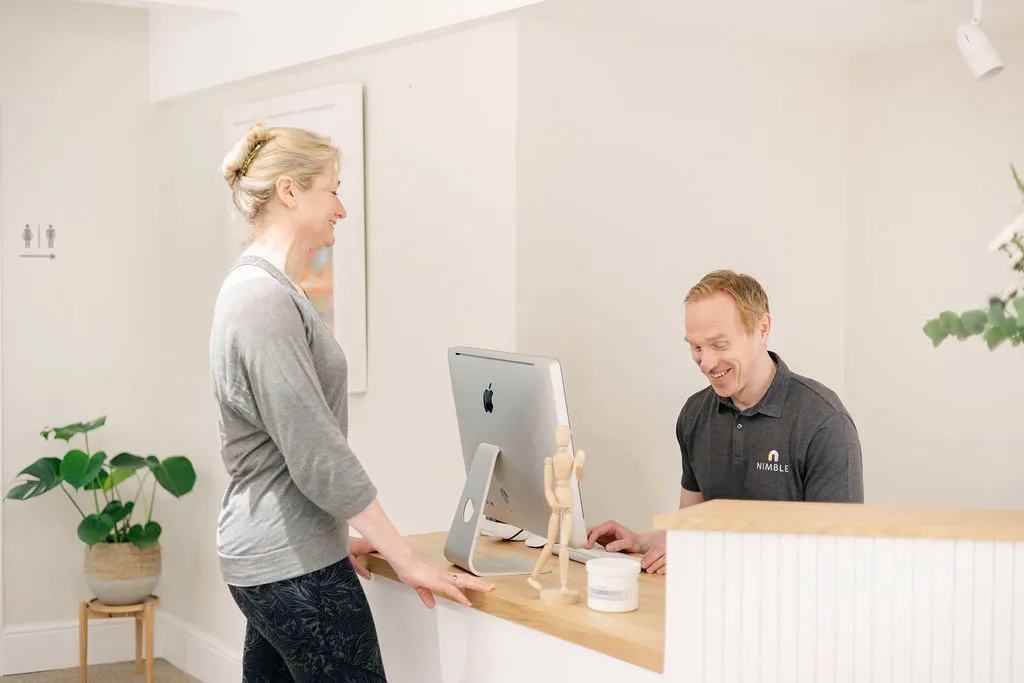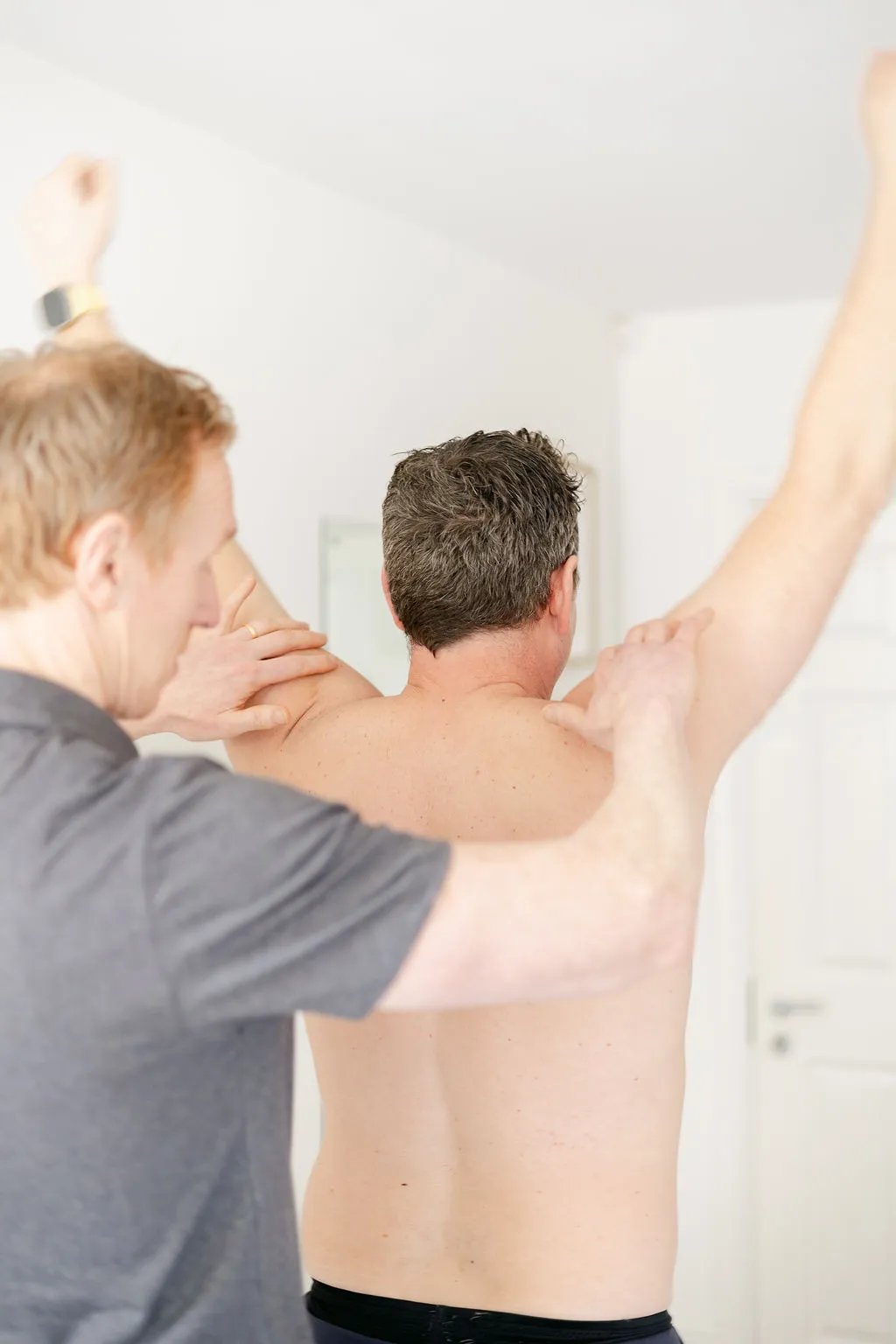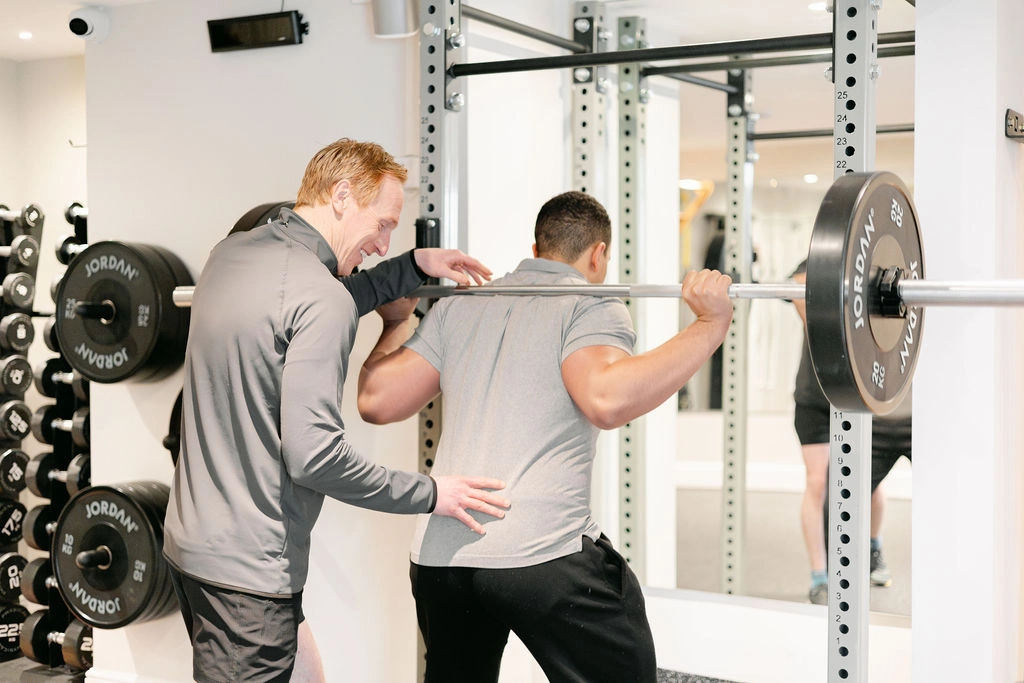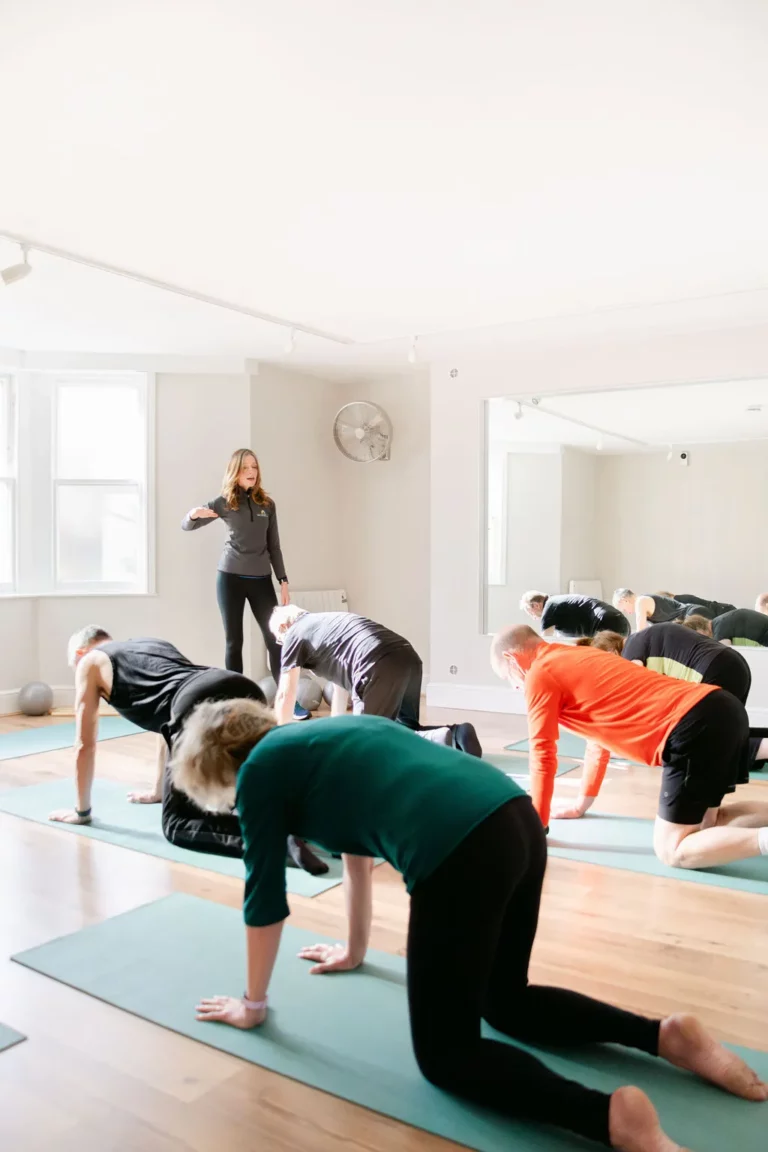What To Expect
Before your appointment
Before you arrive, please:
- dress in loose, comfortable clothing for your osteopathy appointment
- wear appropriate gym wear for a PT session
- bring any relevant X-rays and/or MRI reports
- bring a list of any medication you take
- be prepared to take off some of your outer clothing so we can examine you properly. If you’re worried about this, please talk to us. You are welcome to bring a chaperone to your appointments.


At your appointment
- Your history: We’ll ask about your medical history and lifestyle, including any operations, injuries or activities that contribute to your symptoms.
- Your examination: We’ll look closely at the area(s) of pain, your posture and your movement to work out what’s causing the problem and how
- Your treatment: We’ll use hands-on osteopathic techniques to treat your symptoms and restore your body’s natural alignment and function. This may include soft-tissue massage, joint articulation, dry needling, exercises in our private gym – or any combination, depending on your issue.
After your appointment
In the first couple of days after your treatment, you might feel:
- More freedom to move and decreased muscle spasm or strain
- Tired as your body adapts to the changes made during your treatment
- Exacerbated pain for 24-48 hours as your body adapts to its new position
- Physical fatigue and aches if you’ve done a PT or rehab session in the gym
Please look after yourself in this period by drinking plenty of water and avoiding very rich food, alcohol and exercise so your body can use its energy to recover.
If you are concerned about any post-treatment symptoms, please contact us.


Before your next appointment
Our treatments are most effective when we work together. We’ll give you exercises and advice to support your treatment, manage your pain, help you get better and stop your symptoms from returning.
You can help yourself by:
- Following the advice we offer you
- Moving and exercising in a way that supports your recovery
- Making small lifestyle changes that stop your symptoms from returning
FAQs
Your questions answered
What is Osteopathy?
Osteopathy is about more than bones. We’re experts who are trained to use our hands to diagnose all kinds of problems and we recognise the important link between how the muscles, bones, joints, nerves, organs, circulation and fascia all work together for optimal health and well-being.
What do you treat?
We treat all sorts of chronic and acute pain caused by injuries or issues with your muscles, bones and joints. We treat people of all ages and all body types. Find out what we treat here.
Do I need to be referred by a doctor?
No. You can refer yourself. Some GPs may recommend you see an osteopath but osteopathy isn’t currently available on the NHS in Bristol and Somerset.
What do osteopaths do?
We consider that with a little help, our bodies can repair themselves. During treatment, we use different techniques such as deep soft tissue massage, joint movement and manipulation, and stretching muscles. This helps increase the blood and nerve supply to tissues, which aids your body’s healing.
We’ll also give you advice and exercises to take home so that you help your body heal, improve your health and stop the problem from coming back.
Does treatment hurt?
We’ll do everything we can to minimise discomfort. Treatment should be gentle and non-traumatic. You may feel aches, discomfort and tiredness 24-48 hours after treatment.
What should I wear?
We need to see the area of your pain and any related areas. That may mean that need to undress to your underwear, so please wear loose, comfortable clothes and underwear that you’re happy in. Lots of patients wear loosefitting shorts and a vest or bralet on top of underwear for more coverage, which is fine – if you’re unsure or worried, please just ask us. Wemay even have shorts that you can borrow. You are always welcome to bring a chaperone.
Can I bring someone with me?
You’re welcome to bring a friend or relative as a chaperone or carer if it helps you.
How long will my treatment last?
That depends on your issue. If you’re in acute pain, we’ll give a shorter more specifictreatment. If you have chronic pain, we may need to treat it more and for longer. As a guide, treatments last from 15 minutes to 1 hour. After your first consultation, your osteopath will give you an idea of how long and for how many treatments.
How many treatments will I need?
This depends on your complaint and how well you’re able to follow our advice and doexercises between appointments. As a guide, we’ve split symptoms into categories so you can get an idea of how many treatments you may need.
Acute – when your symptoms are very painful, limit movement and have lasted less than a week: 1 – 4 sessions with the possibility of preventative treatments at longer intervals in the future.
Sub-acute – when your symptoms are between 2 and 8 weeks old and may have reduced in intensity, but not gone away or you have flares from daily living activities: 4 – 8 treatments to deal with the original injury and correct parts of
your body that have been compensating.
Chronic – when your symptoms have lasted for two months or longer, especially if they’ve bothered you for years: 4 – 8 treatments plus coordinated work outside your treatment, such as seeing your GP, other therapists, lifestyle changes or exercise programmes.
How much does treatment cost?
Please see our page on appointment types.
Can you treat pain straightaway?
If your symptoms have started in the last week, please contact us for advice on managing your
Should I use heat or ice?
You can try both. As a general rule, heat relaxes muscles and ice reduces pain and swelling.
Ice: Use ice to settle symptom flare-ups, acute symptoms and post-treatment soreness. Wrap an ice block (or frozen peas) in a tea towel and then hold it against the area that hurts. Remove the ice if you can’t stand the feeling or after 15 minutes.
Heat: Use heat for chronic conditions with associated muscle tension such as headaches caused by neck tension. Never apply heat for longer than 30 minutes at a time or use it for acute symptoms as it can make them worse.
Contrast bathing: This is where you apply ice and then heat. This technique is useful a few days after an acute injury. Always start and finish with ice – for example, 5 mins ice, 5 mins heat, 5 mins ice.
Is osteopathy safe during pregnancy?
Yes. Osteopathy is gentle on your pregnant body. In fact, it’s an excellent way of helping your body as it changes during pregnancy.
How do osteopaths train?
In the UK, osteopaths do a full-time degree course over four years. Then they register with the General Osteopathic Council. Osteopathic training involves completing more than 1000 clinical hours treating patients.
Can I claim for treatment on my medical insurance?
Some medical insurers cover osteopathic treatment. Please check with your insurer before you book. For more information on which insurance providers we are registered with, please contact us.
Our Cancellation Policy
Life happens and sometimes you’ll need to cancel or change your appointment. If you do, please give us plenty of notice so we can give your appointment to somebody else.
We will charge you for late cancellations as follows:
Half your fee if you cancel after your 24-hour text/email confirmation
Full fee if you cancel or reschedule on the day of your appointment

